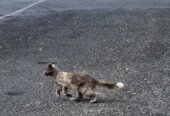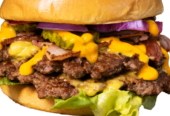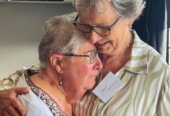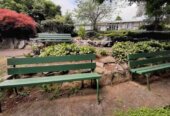It’s been graduation time for students at Te Wānanga o Aotearoa – and today the one of those students shares her journey with News readers.

Photo from the TWoA Tainui 2021 Graduations (Thursday Afternoon – Ceremony 2), held at Elim Church, Te Rapa, Hamilton, New Zealand. Taken: Thursday 22 April 2021. Photo: Mike Walen / KeyImagery Photography. Copyright: © Te Wānanga o Aotearoa.
Ko Te Mānukanuka o Hoturoa te moana
Ko Ngāti Whatua te mana whenua
He uri whakaheke ahau nō te whanau Campbell nō Kotirana
I tupu ake ahau i Tāmaki Makaurau
Heoi āno kei Te Awamutu ahau e noho ana
Ko Heather tēnei te hāpai ake nei
Ko te pae tawhiti whāia kia tata, ko te pae tata whakamaua kia tina.
Seek the distant horizons until they become closer, grasp onto those horizons close to you, there is your destiny.
My name is Heather Campbell. I am of Scottish descent – a tauiwi – no surprises there.
I graduated 2 weeks ago in Te Rōnakitanga ki Te Reo Kairangi, a Level 5 Diploma in Te Reo Māori from the Apakura Campus of Te Wānanga of Aotearoa in Te Awamutu.
I moved to Te Awamutu three years ago after 35 years away from Aotearoa. I came back with a passion to learn Te Reo Māori that started back in 1976 when I was a young, inexperienced art teacher at Fairfield College. My Māori students had so much talent and were invariably not confident learners.
Then I got to see them in their world when they invited me to go to ‘Maori Club’ competitions on a noho marae. Watching them perform and seeing how they were supported by their whānau, I knew then how much that education system was failing these rangatahi.
Not much later about 36 years ago Te Wānanga o Aotearoa was conceived in Te Awamutu by a few committed people, no government support, on a shoestring but with that same ethos – to support these rangitahi who weren’t thriving in the Pākehā system through a kinder, creative learning style.
Going forward, to quote the current infographics from 2020, Te Wānanga o Aotearoa has grown from that small carving workshop to a national institution with 30,000 students studying from a choice of more than 50 courses in business, education, social services, toi (art) trades and more. It has over 100 sites across the country and about a half of the students are non-Māori.
What have I learnt in three years as one of these non-Māori who found my way to Te Wānanga o Aotearoa? Mostly I have answers to questions I didn’t know how to ask.
I’ve sung waiata badly, I’ve sobbed privately at the waiata aroha and I acknowledge the power of karakia. I can’t unsee the stories of the invasion of the Waikato in 1865. I love the courage and persistence of a woman called Te Puea Hērangi, builder of Tūrangawaewae Marae who I have tried to honour in a painting for my last assessment.
I thank my two kaiako (teachers) who have always treated me with kindness and endless patience especially Whāea Teiria who helped catapult those of us in Level 5 through the syllabus that Covid seemed intent on derailing last year. I have made friends who wonderfully know and accept my frailties and fears.
Where to from here? I move forward with the kākano of te reo at work in my head every day.
My mouth will always be a Pākehā mouth. I have to humbly accept it will never flex and emit the right sounds that I have heard and feel in my heart. I will never grasp enough vocab to fill the void of a lifetime but my passion for te reo is immoveable and I know better who I am in this country.
Ko te reo te mauri o te mana Māori – Māori language is the life essence of Māori identity. – Sir James Hēnare.
• Te Wānanga o Aotearoa in Waikato runs a range of te reo, tikanga, business and toi (arts) courses – for more information go to 0800 355 553 or visit www.twoa.ac.nz. Te reo classes for 2021 are no longer taking enrolments but places will be available in 2022.








